Tourist Attractions
It explores the wonders of Delhi, its heritage, the art and craft, the diverse cuisine and culture. A symbol of the country's rich past and thriving present, Delhi is a city where ancient and modern blend seamlessly together. It is a place that not only touches your pulse but even fastens it to a frenetic speed. Home to millions of dreams, the city takes on unprecedented responsibilities o realizing dreams bringing people closer and inspiring their throughts.
Explore the City

India Gate
The India Gate (formerly known as All India War Memorial) is a war memorial located near the Kartavya path on the eastern edge of the "ceremonial axis" of New Delhi, formerly called Rajpath. It stands as a memorial to 84,000 soldiers of the Indian Army who died between 1914 and 1921 in the First World War, in France, Flanders, Mesopotamia, Persia, East Africa, Gallipoli and elsewhere in the Near and the Far East, and the Third Anglo-Afghan War. 13,300 servicemen's names, including some soldiers and officers from the United Kingdom, are inscribed on the gate.[2] Designed by Sir Edwin Lutyens, the gate evokes the architectural style of the ancient Roman triumphal arches such as the Arch of Constantine in Rome, and later memorial arches; it is often compared to the Arc de Triomphe in Paris, and the Gateway of India in Mumbai.
Red Fort
The Red Fort or Lal Qila is a historic fort in the Old Delhi neighbourhood of Delhi, India, that historically served as the main residence of the Mughal emperors. Emperor Shah Jahan commissioned construction of the Red Fort on 12 May 1638, when he decided to shift his capital from Agra to Delhi. Originally red and white, its design is credited to architect Ustad Ahmad Lahori, who also constructed the Taj Mahal. The fort represents the peak in Mughal architecture under Shah Jahan and combines Persianate palace architecture with Indian traditions.

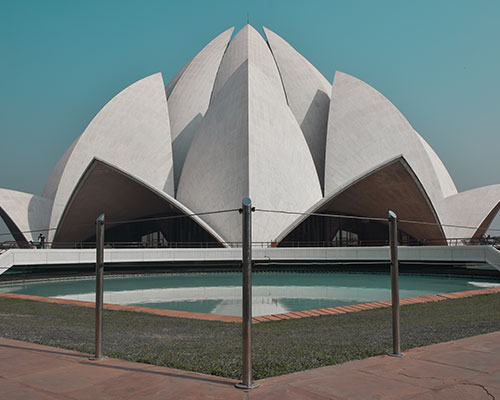
Lotus Temple
The Lotus Temple, located in New Delhi, India, is a Bahai House of Worship that was dedicated in December 1986. Notable for its lotus-like shape, it has become a prominent attraction in the city. Like all Bahai Houses of Worship, the Lotus Temple is open to all, regardless of religion or any other qualification. The building is composed of 27 free-standing marble-clad "petals" arranged in clusters of three to form nine sides, with nine doors opening onto a central hall with a height of slightly over 34 meters and a capacity of 1,300 people. The temple have total assets of 3000 crore and 20th most richest temple in India as per Worth Idea.The Lotus Temple has won numerous architectural awards and has been featured in many newspaper and magazine articles.[6]
Qutub Minar
Indian culture is the heritage of social norms and technologies that originated in or are associated with the ethno-linguistically diverse India. The term also applies beyond India to countries and cultures whose histories are strongly connected to India by immigration, colonisation, or influence, particularly in South Asia and Southeast Asia. India's languages, religions, dance, music, architecture, food and customs differ from place to place within the country.
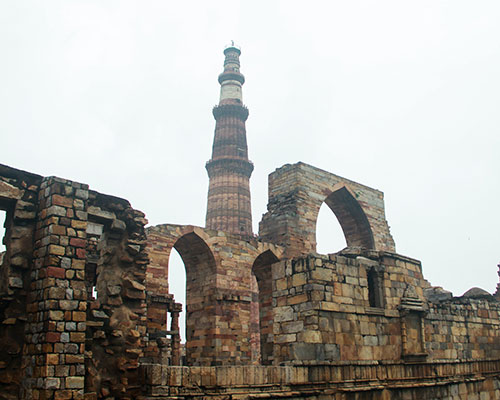
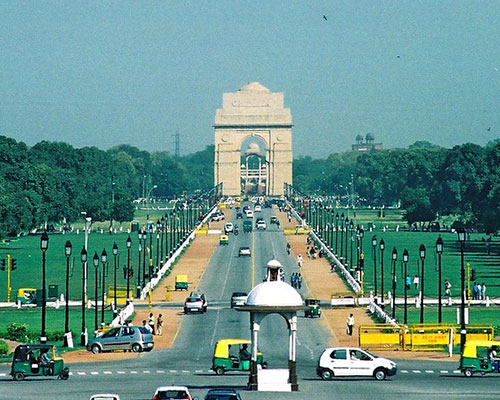
Kartya Path
Kartya Path
Stretching from Rajpath meaning 'King's Way' is a ceremonial avenue that is used during the Republic Day every year. It is located in the central part of Delhi and stretches from the Rashtrapati Bhavan through Vijay Chowk and India Gate, making it easily accessible from every corner of the capital city.
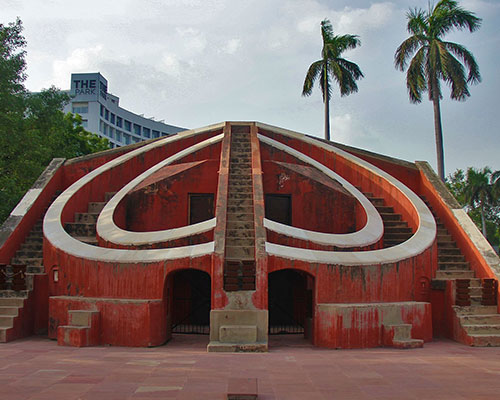
Jantar Mantar
Jantar Mantar
The instruments at Jantar Mantar are fascinating for their ingenuity, but accurate observations can no longer be made from here because of the tall buildings around.
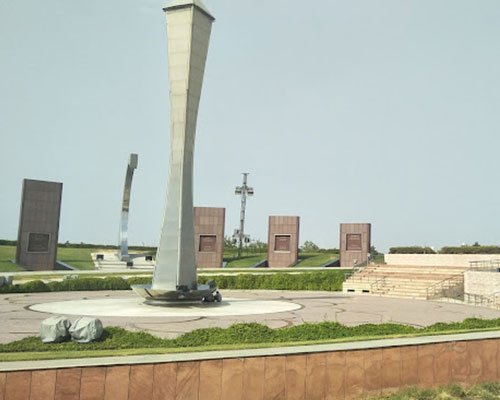
Guru Tegh Bahadur Memorial
Guru Tegh Bahadur Memorial
With a view to beautify all the entry points of Delhi, Government of NCT of Delhi has set up Guru Tegh Bahadur Memorial near Singhu Boarder (G.T.Karnal Road) National Highway-1 and is presently being maintained by Delhi Tourism, Government of Delhi.
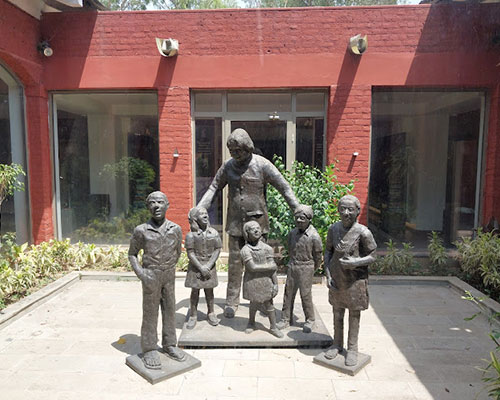
A. P. J. Abdul Kalam Memorial
A. P. J. Abdul Kalam Memorial
Born on October 15, 1931 in village of Dhanushkodi, Rameshwaram, Tamil Nadu, Dr. Kalam will remain one of the finest human beings to have ever lived. He had an illustrious and successful life, and as he said, If you want to shine like a sun, then first burn like a sun.
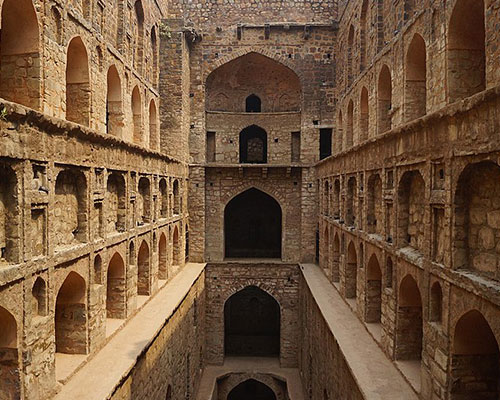
Agrasen ki Baoli
Agrasen ki Baoli
Agrasen ki Baoli, a major tourist attraction in Delhi, is protected by The Archaeological Survey of India. The structure is believed to have been built sometime during the Mahabharata era. The baoli is an ancient water reservoir that stands 60 mts. long and 15 mts. wide with an assorted mosaic of 103 step stones.
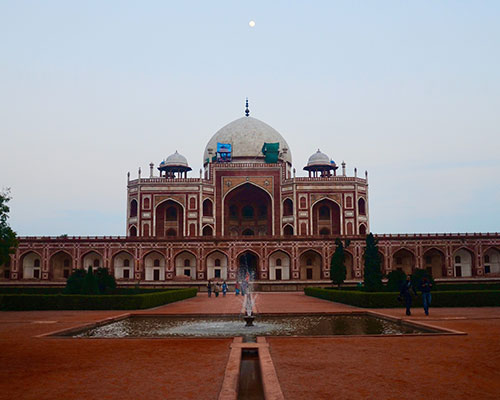
Humayun's Tomb
Humayun's Tomb
The Humayun's Tomb is a UNESCO World Heritage Site in Delhi Built for Mughal Emperor Humayun in the year 1570, itis the first grand dynastic garden mausoleum of the subcontinent.
Delhi Foods
In Delhi, diversity is not only limited to landscapes, people or cultures, but it extends to Delhi cuisine as well. Influenced by factors like climate, geography and regional culture, the staple foods consumed in different zones (North, South, East and West) are distinct in taste and ways of preparation. However, there is one common factor across the state - food is an indispensable part of every celebration, be it big or small. Moreover, Indians love to serve delectable food to guests and make them at home.
The North
Be it the state of Punjab, Uttar Pradesh, Delhi or Kashmir, in north India, the main course foods are influenced by Mughlai and Awadhi cuisines. The food is usually rich in fresh cream, ghee and spices. Many delicacies like Butter Chicken, Cholle, Korma, Dum Aloo, Rajma etc., are prepared in onion and tomato-rich gravy and a balanced mix of species. These delicacies are savoured with a variety of slices of bread like Kulcha, Parathas or Tandoori Roti. Snacks like Samosa, Dahi Bhalle, Kebabs or Pani Puri are some of the most loved food items by locals and foreigners too.
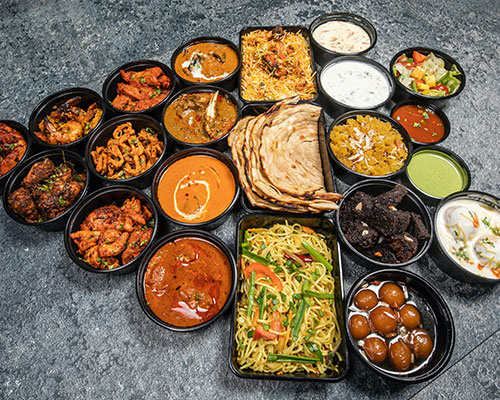
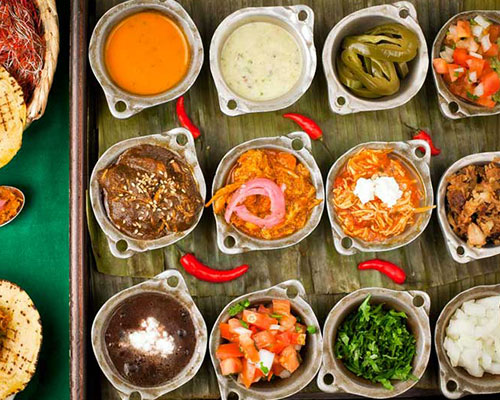
The East
The eastern region of India consists of states like West Bengal, Orissa, Sikkim, Arunachal Pradesh, Assam, Bihar, etc., and the landscape has beautiful mountains and beaches. Many staple dishes of the eastern belt are prepared using a lot of greens and seafood, and the curries are enjoyed with rice. To name a few, spicy-tangy fish curry of Assam and West Bengal, Litti Chokha from Bihar, comforting Thukpa (nutritious food) from the Northeastern region and Dalma (cooked with lentils, papaya, and mashed potatoes) from Orissa. Along with this, students must not miss out on the Mughlai cuisine of West Bengal, like Biryani, Kebabs and Mughlai Paratha.
The West
The western belt of India in-houses states like Gujarat, Rajasthan, Maharashtra and Goa. Owing to a variety of geographic and climatic conditions, they also differ across these states. Some of the prominent main course dishes include - scrumptious Gujarati 'Thali' (consisting of a variety of vegetables, lentils, different types of breads, Khichdi, salads, buttermilk, sweets, etc), appetising Daal- Baati, Choorma and Laal Maas (Mutton curry prepared with a blend of Yoghurt and species) of Rajasthan and seafood from Maharashtra or Goa cooked in spicy and sour gravy with hint of fresh coconut.
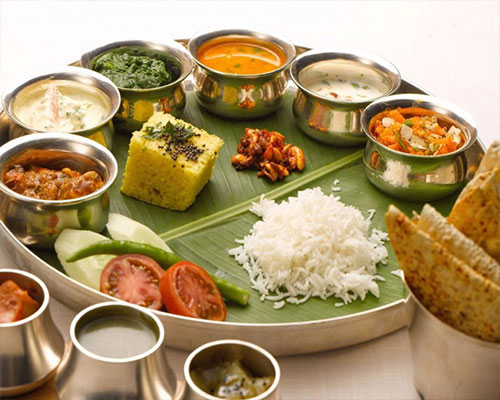
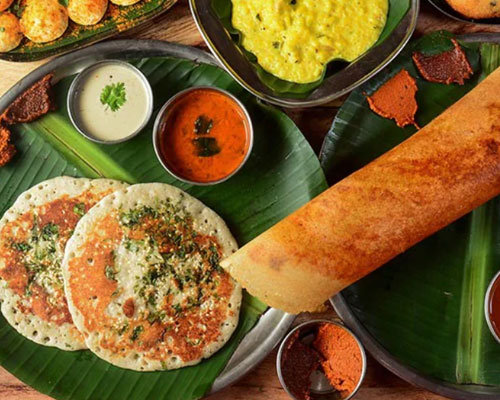
The South
The southern part of India encompasses five states, namely - Karnataka, Andhra Pradesh, Tamil Nadu, Kerala and Telangana, and the south-Indian cuisine majorly revolves around rice-based dishes. These include crispy Dosas (thin sheets made with rice batter and stuffed with flavoursome filling), soft idlis (steamed cakes made with rice batter) or uttapams (rice pancakes), curd rice or lemon served with healthy Sambhar or a different variety of stews and chutneys. The Hyderabadi Biryani, cooked with an array of spices, characterised by Mughlai and Iranian flavours, is another popular rice-based delicacy from South India.